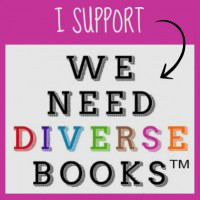Second titles received so far have been posted! Please submit yours if you haven’t done so yet…
Science Fiction details and second title suggestions coming tomorrow!
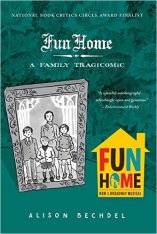 Title: Fun Home: A Family Tragicomic
Title: Fun Home: A Family Tragicomic
Author: Alison Bechdel
Main Appeal Factors: Family relationships, coming of age, sexual orientation issues, memoir
Genre: Graphic Novels
Annotation/Thoughts: Bechdel has written a memoir that examines her relationship with her father, Bruce. The graphics are not colorful consisting of blue, black, and white but the pictures add to the story. For example, the last page shows Bruce catching his daughter as she jumps into a swimming pool at the same time a truck is about to crash into Bruce. In this panel Bechdel is showing how her father was there offering support and his untimely death. Fun house refers to the funeral home that Bechdel grandmother and father ran. Being surrounded by death and sadness somehow the story is also humorous. Bechdel comes out as a lesbian only to learn her father is gay. The book is quick paced, has an insightful tone, and is a coming of age story.
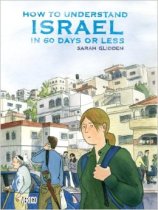
Title: How to Understand Israel in 60 Days or Less
Author: Sarah Glidden
Main Appeal Factors: Leisurely pace, fully developed characters, realistic setting, traditional layout
Genre: Graphic Novels
Annotation/Thoughts: This is the story of a young woman who takes a free tour of Israel that is offered to Jewish young people so they can learn their roots. She goes with the expectation of finding an Israel that oppresses the Palestinians, especially since she has a Muslim boyfriend. Instead she finds a complicated history of a complicated people, country and area. The artwork shows her mixed feelings as she tours various sites and museums. This book could easily go into the travel section or a travel display as well as a history section. People planning on taking a tour of the area — Jewish or not — would enjoy reading this ahead of time.
Title: Empire State
Author: Jason Shiga
Main Appeal Factors: Belated coming of age, hipster-aged characters/relationships, literary fiction-ish plot
Genre: Graphic Novels
Annotation/Thoughts: Character-driven, semi-autobiographical graphic novel with the subtitle “A Love Story (or Not)”. Slow-moving plot. The focus is on the main character, a geeky Asian-American man in his early 20s at a dead-end library job in Oakland, California named Jimmy (who shares characteristics with the author) and his friendship with (crush on) the tough-talking Sara who moves to New York City. Jimmy takes an uncharacteristic leap of faith and jumps on a bus to New York City to see if he too can become a different person. The tone is ironic. The pictures of people are stylized, cartoonish, not realistic, but the city backdrops are drawn in detail. Everything is single-color: Oakland scenes are blue and New York is red. Recommend to readers who enjoy literary fiction and coming of age novels and are open to trying a graphic novel.
Title: March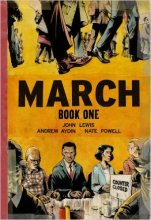
Author: John Lewis
Main Appeal Factors: History, civil rights, setting, intensity, relevance to today’s current events
Genre: Graphic Novels
Annotation/Thoughts: Reading March, I felt like I was taking part in something profound. Congressman John Lewis played an integral part of the civil rights movement. His story is unfolds as he is reflecting on his life while talking to two young boys on the morning of Barack Obama’s inauguration. This framework is genius, as it so simply portrays all the work that was done by past generations to get us to this point. The artwork is highly detailed, like typical “comic” art, and the level of realism suits the subject matter. So relevant to the current state of our country, March provides a really engaging, accessible way to become informed about a key player in the civil rights movement.
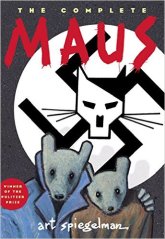 Title: Maus
Title: Maus
Author: Art Spiegelman
Main Appeal Factors: Likeable characters and information about vineyards
Genre: Graphic Novels
Annotation/Thoughts: Maus is a graphic novel that is a steady and compelling read. There are two storylines, the first is the father/son exchange as Art Spiegelman visits his father to learn and document his father’s story, and the main storyline is Art’s father explaining their family’s history while living through the Holocaust. The first storyline is fantastic as it shows the real disconnects between adult son and father and it is comical but also heartbreaking. Art’s father’s more involved story about the holocaust is personal, realistic and understandably bleak. Art portrays the Jews as mice and one of the reasons for this is that the Nazis considered Jews to be vermin or rats. Hence, the Germans are drawn as cats who chase and kill the mice. For me, one of the great benefits of reading graphic novels is that if I take my time to look at the artwork as I read the words, I absorb a larger takeaway from the book due to the combination of the narrative and the accompanying artwork.


